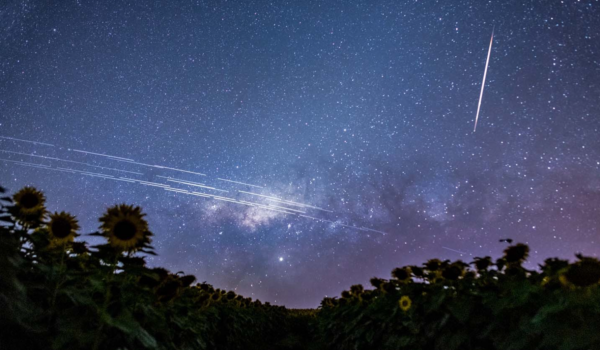According to a recent report, SpaceX and Amazon satellite networks might help investigate gamma rays, space weather, and other topics. The increasing number of satellites in orbit is also posing issues for Earth-based astronomers. Scientists suggest adding thousands of microscopic gamma-ray detectors to mega-constellations to construct a new telescope. Thousands of weak detectors might match NASA’s Swift and Fermi gamma-ray observatory. This might help address astronomy’s most pressing issues about gamma-ray bursts.
Satellite-mounted scientific instruments are not new. Iridium Communications and scientists sent research devices into orbit in 2011. Around 30 Iridium satellites have dosimeters to detect radiation in low Earth orbit, and all of them have magnetometers for the AMPERE program, which analyzes how energy enters the ionosphere from the magnetosphere.
Satellite mega-constellations can interfere with Earth-based observatories, although more research satellites may give more data and a better picture.

Satellite constellation data is difficult to get scientifically. Low-Earth orbit satellites orbit Earth in 90 minutes. Combining data from numerous satellites is difficult. Additionally, orbital scientific equipment is restricted. Low-Earth-orbit communications satellites last five years, therefore detectors must be cheap. Satellite engineers would also need to add power sources and data cables to support the extra payloads.
No firms creating massive satellite constellations have offered to put gamma-ray detectors or other sensors to aid scientists. Mega-constellations may hinder research, yet some scientists want more government supervision. Scientists and satellite makers may collaborate to find a win-win solution with more involvement.
However, scientists see an opportunity in what may be a threat to astronomy.
In conclusion, satellite constellations provide challenges for Earth-based astronomers but also offer opportunities to improve science. Scientists might develop a new telescope that matches NASA’s Swift and Fermi by adding thousands of small gamma-ray detectors to mega-constellations.

However, collecting scientifically meaningful data from satellite constellations involves technological challenges, and none of the businesses creating massive satellite constellations have declared they will deploy gamma-ray detectors or other innovative sensors to help scientists.
Therefore, some scientists are pushing for tighter government control to minimize research damage from mega-constellations and urge satellite producers to participate.

